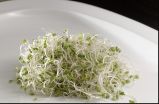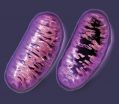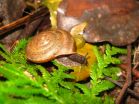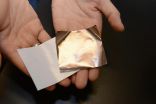(Press-News.org) Results of a small clinical trial suggest that a chemical derived from broccoli sprouts — and best known for claims that it can help prevent certain cancers — may ease classic behavioral symptoms in those with autism spectrum disorders (ASDs).
The study, a joint effort by scientists at MassGeneral Hospital for Children and the Johns Hopkins University School of Medicine, involved 40 teenage boys and young men, ages 13 to 27, with moderate to severe autism.
In a report published online in the journal Proceedings of the National Academy of Sciences during the week of Oct. 13, the researchers say that many of those who received a daily dose of the chemical sulforaphane experienced substantial improvements in their social interaction and verbal communication, along with decreases in repetitive, ritualistic behaviors, compared to those who received a placebo.
"We believe that this may be preliminary evidence for the first treatment for autism that improves symptoms by apparently correcting some of the underlying cellular problems," says Paul Talalay, M.D., professor of pharmacology and molecular sciences, who has researched these vegetable compounds for the past 25 years.
"We are far from being able to declare a victory over autism, but this gives us important insights into what might help," says co-investigator Andrew Zimmerman, M.D., now a professor of pediatric neurology at UMass Memorial Medical Center.
ASD experts estimate that the group of disorders affects 1 to 2 percent of the world's population, with a much higher incidence in boys than girls. Its behavioral symptoms, such as poor social interaction and verbal communication, are well known and were first described 70 years ago by Leo Kanner, M.D., the founder of pediatric psychiatry at The Johns Hopkins University.
Unfortunately, its root causes remain elusive, though progress has been made, Talalay says, in describing some of the biochemical and molecular abnormalities that tend to accompany ASD.
Many of these are related to the efficiency of energy generation in cells. He says that studies show that the cells of those with ASD often have high levels of oxidative stress, the buildup of harmful, unintended byproducts from the cell's use of oxygen that can cause inflammation, damage DNA, and lead to cancer and other chronic diseases.
In 1992, Talalay's research group discovered that sulforaphane has some ability to bolster the body's natural defenses against oxidative stress, inflammation and DNA damage. In addition, the chemical later turned out to improve the body's heat-shock response — a cascade of events used to protect cells from the stress caused by high temperatures, including those experienced when people have fever.
Intriguingly, he says, about one-half of parents report that their children's autistic behavior improves noticeably when they have a fever, then reverts back when the fever is gone. In 2007, Zimmerman, a principal collaborator in the current study, tested this anecdotal trend clinically and found it to be true, though a mechanism for the fever effect was not identified.
Because fevers, like sulforaphane, initiate the body's heat-shock response, Zimmerman and Talalay wondered if sulforaphane could cause the same temporary improvement in autism that fevers do. The current study was designed to find out.
Before the start of the trial, the patients' caregivers and physicians filled out three standard behavioral assessments: the Aberrant Behavior Checklist (ABC), the Social Responsiveness Scale (SRS) and the Clinical Global Impressions-Improvement scale (CGI-I). The assessments measure sensory sensitivities, ability to relate to others, verbal communication skills, social interactions and other behaviors related to autism.
Twenty-six of the subjects were randomly selected to receive, based on their weight, 9 to 27 milligrams of sulforaphane daily, and 14 received placebos. Behavioral assessments were again completed at four, 10 and 18 weeks while treatment continued. A final assessment was completed for most of the participants four weeks after the treatment had stopped.
Most of those who responded to sulforaphane showed significant improvements by the first measurement at four weeks and continued to improve during the rest of the treatment. After 18 weeks of treatment, the average ABC and SRS scores of those who received sulforaphane had decreased 34 and 17 percent, respectively, with improvements in bouts of irritability, lethargy, repetitive movements, hyperactivity, awareness, communication, motivation and mannerisms.
After 18 weeks of treatment, according to the CGI-I scale, 46, 54 and 42 percent of sulforaphane recipients experienced noticeable improvements in social interaction, aberrant behaviors and verbal communication, respectively.
Talalay notes that the scores of those who took sulforaphane trended back toward their original values after they stopped taking the chemical, just like what happens to those who experience improvements during a fever. "It seems like sulforaphane is temporarily helping cells to cope with their handicaps," he says.
Zimmerman adds that before they learned which subjects got the sulforaphane or placebo, the impressions of the clinical team — including parents — were that 13 of the participants noticeably improved. For example, some treated subjects looked them in the eye and shook their hands, which they had not done before. They found out later that all 13 had been taking sulforaphane, which is half of the treatment group.
Talalay cautions that the levels of sulforaphane precursors present in different varieties of broccoli are highly variable. Furthermore, the capacity of individuals to convert these precursors to active sulforaphane also varies greatly. It would be very difficult to achieve the levels of sulforaphane used in this study by eating large amounts of broccoli or other cruciferous vegetables.
INFORMATION:
These studies were designed at The Johns Hopkins University by Andrew Zimmerman in collaboration with Paul Talalay and Kirby Smith. Jed Fahey prepared the sulforaphane-rich broccoli sprout extract that was administered in capsules to patients. The clinical studies were done at the Lurie Center in Lexington, Massachusetts, which is dedicated to the study of autism and is a satellite of Massachusetts General Hospital's Department of Pediatrics. Other authors of the report include Kanwaljit Singh, Eric Macklin and Susan Connors of Harvard Medical School.
This work was supported by grants from the Nancy Lurie Marks Family Foundation, the Hussman Foundation, the Lewis B. and Dorothy Cullman Foundation, the Agnes Gund Foundation, the N of One Foundation and the Brassica Foundation for Chemoprotection Research.
U.S. patent applications have been filed by The Johns Hopkins University for inventors Smith, Talalay and Zimmerman. Talalay and Zimmerman have divested themselves from all potential financial benefits. The sulforaphane-rich broccoli sprout extract is not a commercial product. Broccoli sprouts and seeds rich in glucosinolates have been licensed by Johns Hopkins to Brassica Protection Products LLC; Antony Talalay, son of Paul Talalay, is chief executive officer. The university owns Brassica Protection Products stock, which is subject to certain restrictions under university policy. The terms of this arrangement are being managed by The Johns Hopkins University in accordance with its conflict of interest policies.
On the Web:
View the article at PNAS (after the embargo lifts).
Learn more about Paul Talalay.
Visit Andrew Zimmerman's website.
Chemical derived from broccoli sprouts shows promise in treating autism
Improvements were seen within 4 weeks and generally persisted during treatment duration
2014-10-13
ELSE PRESS RELEASES FROM THIS DATE:
Chemical present in broccoli, other vegetables may improve autism symptoms
2014-10-13
A small study led by investigators at MassGeneral Hospital for Children (MGHfC) and Johns Hopkins University School of Medicine has found evidence that daily treatment with sulforaphane – a molecule found in foods such as broccoli, cauliflower and cabbage – may improve some symptoms of autism spectrum disorders. In their report being published online in PNAS Early Edition, the investigators describe how participants receiving a daily dose of sulforaphane showed improvement in both behavioral and communication assessments in as little as four weeks. The authors ...
Greater rates of mitochondrial mutations discovered in children born to older mothers
2014-10-13
The discovery of a "maternal age effect" by a team of Penn State scientists that could be used to predict the accumulation of mitochondrial DNA mutations in maternal egg cells -- and the transmission of these mutations to children -- could provide valuable insights for genetic counseling. These mutations cause more than 200 diseases and contribute to others such as diabetes, cancer, Parkinson's disease, and Alzheimer's disease. The study found greater rates of the mitochondrial DNA variants in children born to older mothers, as well as in the mothers themselves. The research ...
Paving the way for a fructose tolerance test
2014-10-13
BOSTON – Increased consumption of table sugar and high-fructose corn syrup has been linked to rising rates of obesity and type 2 diabetes in the United States and throughout the world. Both sweeteners are commonly found in processed foods and sugar-sweetened beverages, and both are made up of nearly equal amounts of two basic sugars, glucose and fructose.
The effects of glucose ingestion in humans are well understood, in part, because they are easily assessed by performing a Glucose Tolerance Test, which measures serum glucose levels after glucose ingestion and ...
Moderate levels of 'free radicals' found beneficial to healing wounds
2014-10-13
Long assumed to be destructive to tissues and cells, "free radicals" generated by the cell's mitochondria—the energy producing structures in the cell—are actually beneficial to healing wounds.
That's the conclusion of biologists at UC San Diego who discovered that "reactive oxygen species"—chemically reactive molecules containing oxygen, such as peroxides, commonly referred to as free radicals—are necessary for the proper healing of skin wounds in the laboratory roundworm C. elegans.
In a paper published in the October 13 issue of the journal ...
New cancer drug to begin trials in multiple myeloma patients
2014-10-13
Scientists at Imperial College London have developed a new cancer drug which they plan to trial in multiple myeloma patients by the end of next year.
In a paper published today in the journal Cancer Cell, the researchers report how the drug, known as DTP3, kills myeloma cells in laboratory tests in human cells and mice, without causing any toxic side effects, which is the main problem with most other cancer drugs. The new drug works by stopping a key process that allows cancer cells to multiply.
The team have been awarded Biomedical Catalyst funding from the Medical ...
A new land snail species named for equal marriage rights
2014-10-13
Scientists from the Department of Life Science, National Taiwan Normal University and the Biodiversity Research Center, Academia Sinica described a new endemic land snail species. The new species Aegista diversifamilia was long confused for the widely distributed A. subchinensis. The study was published in the open access journal ZooKeys.
Aegista subchinensis was first described in 1884 and was thought to be widely distributed in Taiwan. In 2003, one of the co-authors Dr. Yen-Chang Lee noticed that there was morphological divergence between the western and eastern populations ...
Versatile antibiotic found with self-immunity gene on plasmid in staph strain
2014-10-13
WASHINGTON, DC – OCTOBER 10, 2014 - A robust, broad spectrum antibiotic, and a gene that confers immunity to that antibiotic are both found in the bacterium Staphylococcus epidermidis Strain 115. The antibiotic, a member of the thiopeptide family of antibiotics, is not in widespread use, partly due to its complex structure, but the investigators, from Brigham Young University, Provo, Utah, now report that the mechanism of synthesis is surprisingly simple. "We hope to come up with innovative processes for large-scale production and derivitization so that new, and possibly ...
Tailored flexible illusion coatings hide objects from detection
2014-10-13
Developing the cloak of invisibility would be wonderful, but sometimes simply making an object appear to be something else will do the trick, according to Penn State electrical engineers.
"Previous attempts at cloaking using a single metasurface layer were restricted to very small-sized objects," said Zhi Hao Jiang, postdoctoral fellow in electrical engineering, Penn State. "Also, the act of cloaking would prevent an enclosed antenna or sensor from communicating with the outside world."
Jiang and Douglas H. Werner, John L. and Genevieve H. McCain Chair Professor of ...
Stanford scientists create a 'smart' lithium-ion battery that warns of fire hazard
2014-10-13
Stanford University scientists have developed a "smart" lithium-ion battery that gives ample warning before it overheats and bursts into flames.
The new technology is designed for conventional lithium-ion batteries now used in billions of cellphones, laptops and other electronic devices, as well as a growing number of cars and airplanes.
"Our goal is to create an early-warning system that saves lives and property," said Yi Cui, an associate professor of materials science and engineering at Stanford. "The system can detect problems that occur during the normal operation ...
Digital divide: Pediatricians debate whether tots should have access to electronic devices
2014-10-13
SAN DIEGO – When the American Academy of Pediatrics (AAP) published its policy statement in 1999 discouraging electronic media use by children under 2, the focus was on television programs, videos and DVDs.
Over the past 15 years, the technology landscape has changed dramatically. Toddlers now have access to a dizzying array of touchscreen devices that are available anywhere and everywhere. Although the AAP has revised its media use policy over the years based on the latest research, the message regarding toddlers' exposure to screens is the same.
Given the ...
LAST 30 PRESS RELEASES:
Numbers in our sights affect how we perceive space
SIMJ announces global collaborative book project in commemoration of its 75th anniversary
Air pollution exposure and birth weight
Obstructive sleep apnea risk and mental health conditions among older adults
How talking slows eye movements behind the wheel
The Ceramic Society of Japan’s Oxoate Ceramics Research Association launches new international book project
Heart-brain connection: international study reveals the role of the vagus nerve in keeping the heart young
Researchers identify Rb1 as a predictive biomarker for a new therapeutic strategy in some breast cancers
Survey reveals ethical gaps slowing AI adoption in pediatric surgery
Stimulant ADHD medications work differently than thought
AI overestimates how smart people are, according to HSE economists
HSE researchers create genome-wide map of quadruplexes
Scientists boost cell "powerhouses" to burn more calories
Automatic label checking: The missing step in making reliable medical AI
Low daily alcohol intake linked to 50% heightened mouth cancer risk in India
American Meteorological Society announces Rick Spinrad as 2026 President-Elect
Biomass-based carbon capture spotlighted in newly released global climate webinar recording
Illuminating invisible nano pollutants: advanced bioimaging tracks the full journey of emerging nanoscale contaminants in living systems
How does age affect recovery from spinal cord injury?
Novel AI tool offers prognosis for patients with head and neck cancer
Fathers’ microplastic exposure tied to their children’s metabolic problems
Research validates laboratory model for studying high-grade serous ovarian cancer
SIR 2026 delivers transformative breakthroughs in minimally invasive medicine to improve patient care
Stem Cell Reports most downloaded papers of 2025 highlight the breadth and impact of stem cell research
Oxford-led study estimates NHS spends around 3% of its primary and secondary care budget on the health impacts of heat and cold in England
A researcher’s long quest leads to a smart composite breakthrough
Urban wild bees act as “microbial sensors” of city health.
New study finds where you live affects recovery after a hip fracture
Forecasting the impact of fully automated vehicle adoption on US road traffic injuries
Alcohol-related hospitalizations from 2016 to 2022
[Press-News.org] Chemical derived from broccoli sprouts shows promise in treating autismImprovements were seen within 4 weeks and generally persisted during treatment duration



